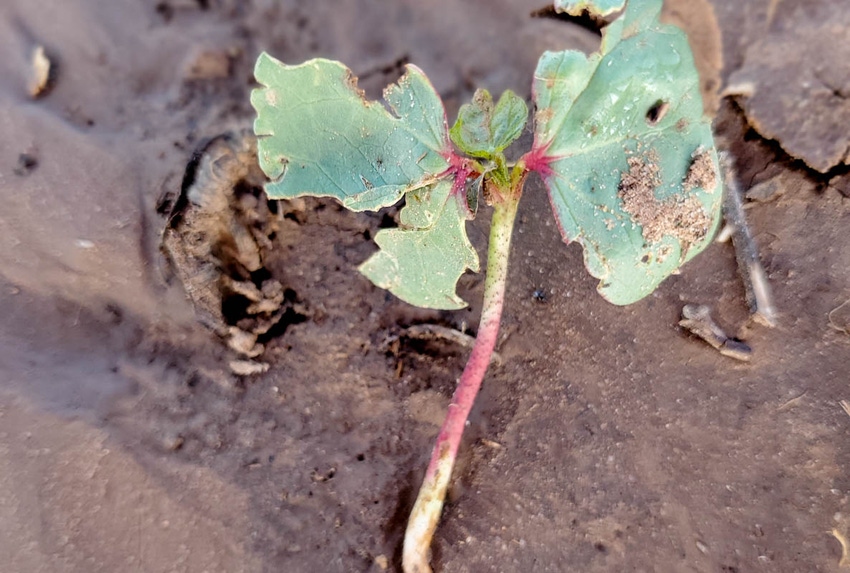June 8, 2019

Producers across the High Plains have struggled to complete cotton planting activity as frequent rainfall events have caused intermittent planting delays, damaged existing stands and exacerbated the incidence of seedling disease in many fields. As producers work to plan their next steps, it is important to note in this regard that RMA rule changes implemented in 2018 will impact the direction some of these decisions take.
The primary change made in 2018 impacts the timing of when cotton can be planted behind a failed, initially planted, cotton crop. Beginning in 2018, a producer who wants to plant cotton after losing their first insured cotton crop is required to wait a minimum of 15 days after the Final Plant Date for their county for the crop to be considered an uninsured second crop.
See, Online guide to aid Texas growers in replant decisions
According to the Crop Insurance Handbook and the Basic Provisions of the Upland cotton policy, a producer planting cotton before the 15th day will cause the acreage to be considered a replanted crop under the original policy and delay any potential indemnity from being processed.
Due to the weather challenges that growers have been dealing with throughout the month of May, many producers are evaluating their options as they work to complete planting or determine which acres will be turned into insurance and possibly replanted. As noted above growers need to be aware of the options they have available to them under the federal crop insurance rules.
See, PCG's Shawn Wade talks LIVE with Farm Press about replant provisions
ields that have been planted and subsequently damaged by heavy rains, hail or other causes will need to be evaluated for stand viability. At this point the producer can either submit their claim to insurance and schedule an appraisal or request permission from their AIP to replant.
It is important to note that when field conditions permit it generally is expected that producers will try to reestablish damaged stands through the end of any applicable late planting period.
See, Spring rains increase need for early season weed control in peanuts
Acreage damaged during the late planting period and instances where field conditions prohibit replanting typically will be scheduled for adjustment so that the producer can determine whether they want to keep the existing stand or fail the acres.
Source: is Plains Cotton Growers, which is solely responsible for the information provided and is wholly owned by the source. Informa Business Media and all its subsidiaries are not responsible for any of the content contained in this information asset.
About the Author(s)
You May Also Like




